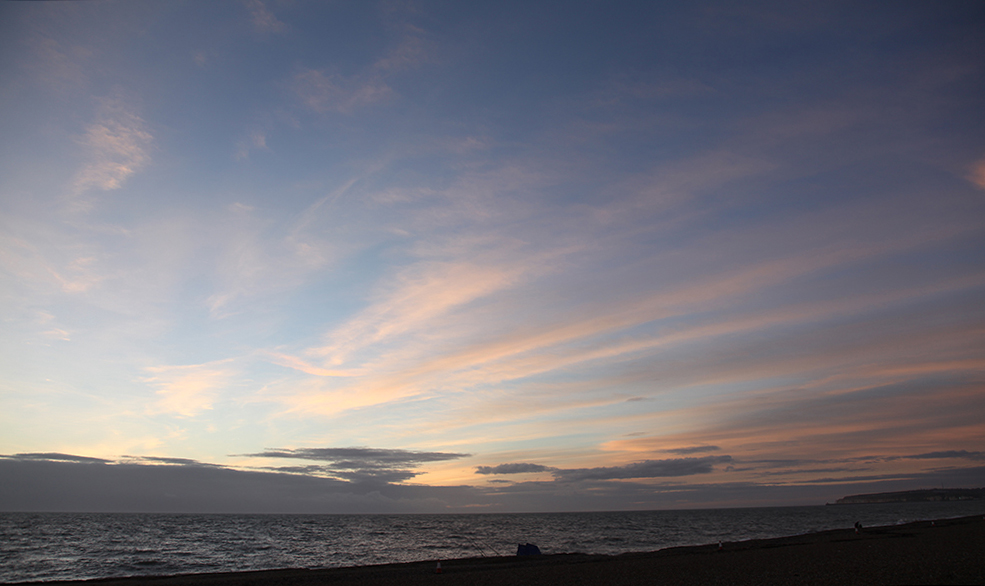Dad taught me to see, taught me to draw. He had an artistic side that rarely found any outlet. He did a little marquetry but enjoyed teaching me how to image a ship’s bow looming up, how to image a Spitfire wing growing realistically off a fuselage. He made me think (aged 5 or 6) about how lines flow, and think about how and what I saw, made me realise the link between the wood/graphite interface and my visual cortex.
So few people learn to really see. I once asked a group of first year students how many lamp posts there were outside the art college. ‘Trick’, you say, ‘who counts’? Agreed – except the college was on a junction of five roads and in the mini-roundabout in the road there was one ginormous freight yard style lighting standard with many lamps around the top, unusually huge for an urban fitting in a small town; unmissable. No-one had seen, really seen, where they were walking…
Now I find it hard to resist suggesting to amateur snappers trying to photograph the sunset to turn off their flash, use their camera settings and think about what they are looking at. Some researcher suggests we don’t remember things visually because we stick a camera between us and the reality. I would suggest many have no visual memory because most people simply have never been taught to look.

the kit used to Shovel Shingle (https://patrickgoff.com/art-2/seaford-seashore-shingle-shovelled/) laid up for the night
Same camera but f/4, 1/30th at ISO 100, as previous
Our exams are designed by academics to test learning so school art classes by and large fail to teach people to use their eyes effectively. It doesn’t stop people looking at the wonder of a sunset. Whether they see the nuances or only carry an impression may not matter. But not learning to see properly impoverishes them and robs the experience of true depth for them.

The light was constantly changing, sun obscured by the horizon cloud bank giving spectacular rays
f/4.5, 1/50th. This is such a good camera, no post processing,- just a crop and slight sharpen
Take your photographs but don’t just play them back on the camera. Enlarge and look into them. Enlarge them until they break into pixels. Understand they are a construct. Some moron recently said that Monet’s paintings were just impressions. So too are photographs just constructs. Monet at least carries emotion and a record of his personal visual reality. Understand your photographs and maybe you can do more with them.

I wanted to catch the reflection of the reds on the surface of the water, along with the strange oily quality of the wave
f/4, 1/30th, ISO 200
Photographs are not reality, any more than a computer screen is. The moron is stupid not to understand Monet’s reaction to reality. These sunset images are part of my reality. They may be taken into a studio and converted into another picture of my reality – they will appear abstract to some, as art is a language that needs understanding of the syntax to read. Photography too is a language, another reality.

Love the reflections of the light turning the sea pink
f/4, 1/100th sec. ISO-2000 at 105mm brilliant capture by the camera, just cropped nothing else
I took many photographs this evening to capture something of this sunset. I ran up and down the cliff path trying to match what I could see in my mind with what I was looking at through the lens. I like what I have as images. But they are not what I saw. I saw exultation. I smelled the colour. I saw a little of the glory of creation. Will my feeble skills get this across here or later on in the studio with paints or pastels?

As sunset changed to darkness the lights of brighton seafront could be seen in the distance whilst the harbour lights flashed at New Haven, The Seaford seafront lights start to change the scene
f/4 1/30th at ISO 3200. Brilliant software thank you Canon
I cannot be the judge. I just hope you enjoy and it helps you to see a little more.


Recent Comments